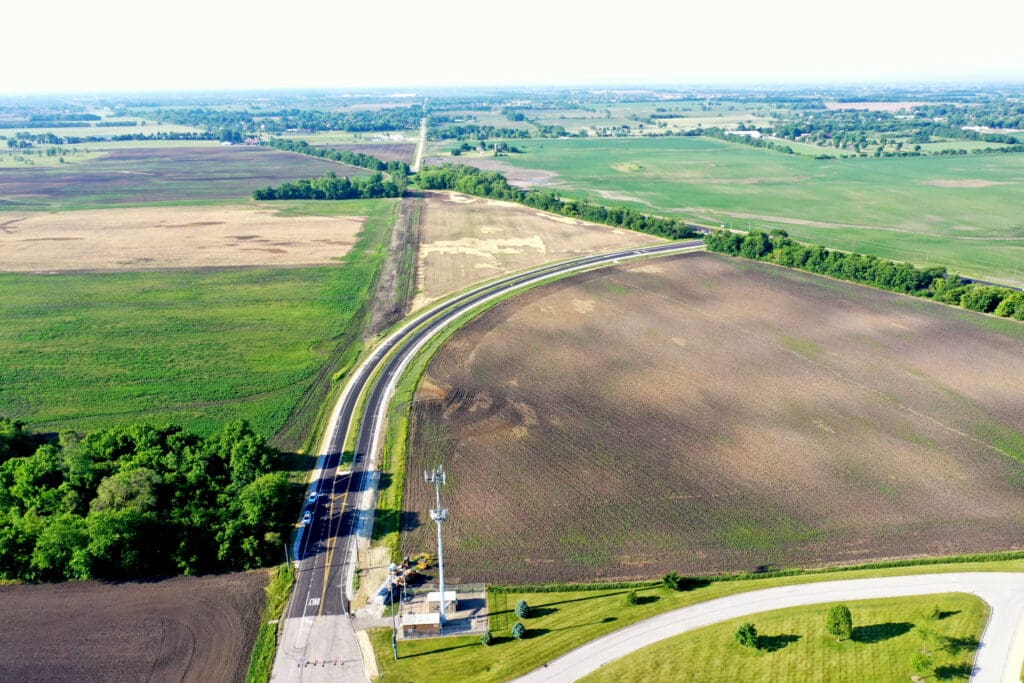
The Eola Road Realignment at US 30 project has been recognized by ACEC-IL receiving both an Engineering Excellence Special Achievement Award and Judges Choice Award in the Small Projects category. This is in addition to receiving an APWA Public Works Project of the Year (Southwest Branch) Award in the Transportation $5 Million to $25 Million category.
This project upgraded an existing unsignalized intersection with an unsafe skew angle into an enhanced signalized intersection with a new, realigned roadway corridor that is the next step to implementing planned upgrades to the regional transportation network. The new roadway design incorporated planning for future expansion from a three‐lane to a five‐lane roadway that will minimize widening impacts and provide opportunities for future economic growth, saving time and money. The use of 3D modeling, in concert with a comprehensive material management plan, served to reduce project costs while minimizing the environmental impact of the project. The result of all of these efforts was a final product that was exceptionally well received by local stakeholders and a benefit for the residents and traveling public.
V3 Companies (V3) served as the prime consultant responsible for providing Phase I preliminary engineering and Phase II design engineering services while Engineering Enterprises, Inc. (EEI) served as the prime consultant responsible for Phase III construction engineering services. Rubino Engineering, Inc. served as a subconsultant to both V3 and EEI by providing geotechnical investigations during Phase II and material testing services during Phase III.
One of the biggest design challenges encountered was the need to consider long‐term planning needs when developing the proposed improvements. As part of the annexation agreement for the properties east of US 30, Eola Road is to be widened from a three‐lane section to a five‐lane urban section (with adjacent multi‐use path and sidewalk) as development occurs. With regard to the properties to the west, it is anticipated that the fourth intersection leg will be added as development occurs and the WIDADUKE Trail alignment is extended west of US 30. Such forethought included locating traffic signal equipment accordingly to avoid any impacts upon the addition of the west intersection leg and utilizing design criteria for the realigned roadway section that reflected its ultimate designation as a Strategic Regional Arterial. These measures also included specifying full‐depth asphalt shoulders along the new roadway section so that an additional through lane in each direction could easily be added in the future.

